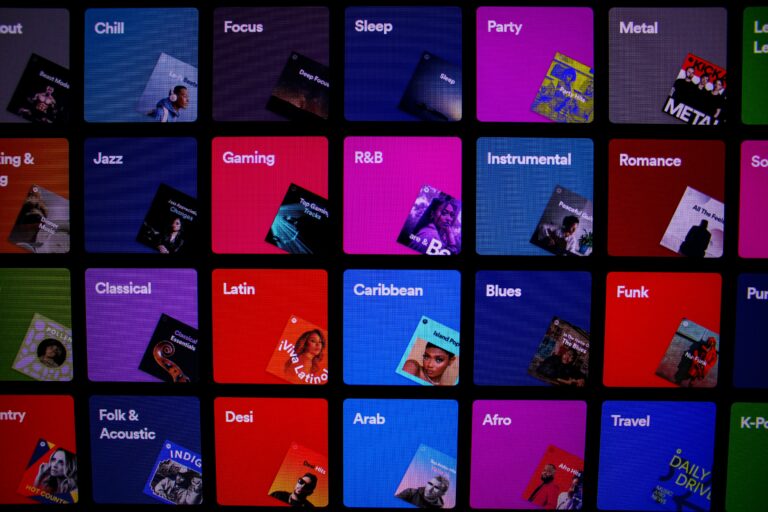Who should read this series?
This series is for music marketers and streaming strategists who want to learn about predictive streaming and for those ready to use it in music marketing. Whether you are just starting to learn about this topic, or you are already implementing it, you will find many practical tips.
I’ll share what marketers at large and small companies should know, and I’ll also give you practical playbooks to help get started if you’re new to this way of marketing.
What is predictive streaming?
At the most basic level, predictive streaming works by evaluating your audio to predict performance in areas such as streams, playlists, audiences, geographies and much more. These predictions can aid in knowing how a song may perform in these areas on streaming platforms like Spotify, YouTube Music, TikTok and more. I’ll go into depth on this in a future post.
Why read this series on predictive streaming?
It is difficult to get your music heard and even with major label backing and a substantial budget, let alone with limited resources. According to the IFPI, record labels spend over $6 billion on marketing and A&R every year. This amount is increasing in recent years, as artists and labels try to break through the noise and compete with the enormous amount of daily music uploads to Spotify
Today, most music marketing focuses on improving an artist’s image, with much focus on an artist’s social channels like Instagram, Twitter, and TikTok, and soliciting streaming platforms like Spotify, YouTube Music and Apple Music for music placement. This can be on playlists, blogs, through brand collaborations, or sync opportunities. While pitching for placement is essential, the most critical component to music marketing success today is streaming strategy:
How will a listener be introduced to your music, and how will that experience impact them?
There is often a gap between what music marketers want and the audience they’re striving to reach. For example, an artist or label may invest a lot of effort to be placed on an editorial playlist, but they may not understand the audience of the playlist isn’t a fit. Predictive streaming is a way of bridging this gap by understanding what works and what doesn’t before any marketing plan is created.
This series is divided into 11 parts.
Part 1 – An Introduction To Predictive Streaming
Predictive streaming is a new way of thinking about the relationship between music, artist, and audience. These relationships today are powered by AI, big data, and machine learning. After reading this post, you will get a peek at algorithms and how they work. I will discuss the types of predictive streaming data marketers should know about. I will also discuss what type of questions predictive streaming can answer.
As a music marketer, you don’t need to have deep technical knowledge in predictive streaming, but you do need to have an understanding of how it works to maximize your potential on platforms like Spotify, YouTube Music, TikTok, and others.
Part 2 – Get To Know Your Music: Building Complete Music Profiles
Building a complete and accurate music profile is the first step in predictive streaming. This means extracting meaningful information from the audio is the first step and understand how it compares in the music economy. I will regularly refer to the music economy as the marketplace of consumers and engaging with music. In this post, I’ll talk about how AI can build music profiles from audio and make them accessible to music marketers.
Part 3 – Get To Know Your Artists: Building Artist Profiles
Artist data has become more and more accessible, but much of the data is noisy making it hard to find meaningful signals. I’ll share which signs are helpful and how they contribute to predictive power.
Part 4 – Managing Your Music as a Portfolio
Different music requires different goals, actions, and diverse strategies. I will go into depth on how to maximize each song’s lifetime value and how to budget for unprofitable, profitable, and highly profitable music.
Part 5 – Playbook 1: Reactive vs. Proactive Marketing – Optimize Your Marketing Spend Using Listener intelligence
When allocating marketing dollars to new music, much focus is placed upon acquiring new listeners on platforms like Spotify or followers on social platforms like Instagram and TikTok, or adding spend to a best-performing channel after release. However, using predictive marketing, you can allocate spend based on estimated performance prior to a release.
Part 6 – Playbook 2: Match The Right Audience To Your Music
We will explore the machine learning technique of similarity learning and how it differs from classical audience segmentation. Similarity learning is a powerful tool to match your music to clusters or communities that share relationships.
Specifically, we will look into demographic-based, genre-based, geo trend-based, and playlist-based models. This technique can be used to gain insight into different needs and preferences regarding marketing interactions. It is vital for marketers working with new artists exploring an audience or established ones looking to break out into other demographics.
Part 7 – Playbook 3: Estimate The Value And The Journey Of A Song
We will take a detailed look into the life cycle of a song, from release to growth or attrition, and explore how your engagement strategy can evolve with each song throughout this life cycle.
Not all songs have equal lifetime value. Some will rise and some will fizzle faster than others. There is an opportunity to create marketing strategies that are differentiated based on the value of each song.
Part 8 – Playbook 4: Propensity Models – Likelihood To Skip, Playlist, and Chart Models
Likelihood models are what most people think about in predictive music marketing. With these models, you can predict the probability of a particular type of future behavior, such as skipping a track or being playlisted. This post will explore propensity models for a song being added by Spotify users or editorial playlists. This will help you better target potential Spotify playlists or listeners.
Part 9 – Playbook 5: Recommendation Engines
Another popular predictive technique is the personalized recommendation of music to consumers. In this post, I’ll teach you about the different types of recommenders that exist on most music platforms and where you may have opportunities for your tracks to show up.
I’ll also share what can go wrong with recommendations and highlight the need for fair and equitable processes. This includes advocating for artist and consumer control over what is recommended.
Part 10 – Playbook 6 – Launch A Predictive Program
Now that you’ll have a stronger understanding of predictive streaming, and how it can help with your marketing strategy, we’ll teach you how to launch a predictive program to help you acquire more and better listeners for an upcoming release or album across multiple platforms like Spotify, YouTube Music or TikTok.
Part 11 – Future of Predictive Streaming
I’ll share my view on the future of predictive streaming and how you can continue to stay ahead of the curve by using it to educate your marketing strategies.
Closing Comments
I hope these series of posts will give marketers the vocabulary and inspiration to understand and use AI and machine learning-powered music marketing as a part of their strategy. I look forward to continuing this dialog beyond these posts.
You can reach me at mohamed@unbias.co or follow me on Twitter @mohmedakamal.




